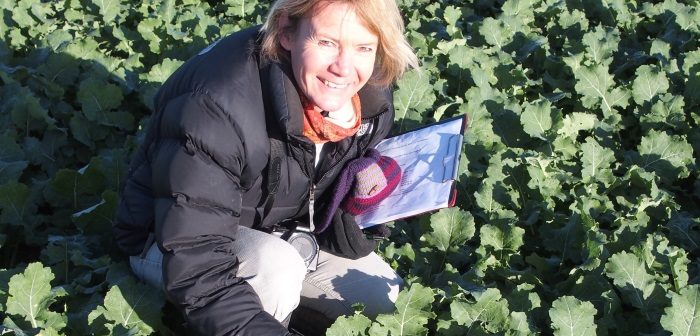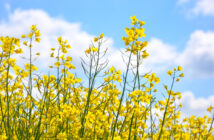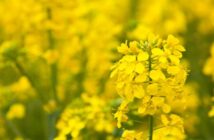Oilseed rape growers and agronomists are being urged to assess their crops over the next couple of weeks to see if they will benefit from an effective plant growth regulator to prevent lodging and to optimise the crop canopy.
“Crops that established quickly and escaped flea beetle attacks are now large and leafy,” says BASF Business development manager Clare Tucker.
“However, high-yielding years such as 2011 and 2015 occur when crops have smaller canopies, because they capture more light more efficiently and so produce more seeds/m². They are also less likely to lodge.
“Crops that are too leafy at this stage of the season are likely to end up with overly thick canopies later on.”
To help decide which crops merit treatment, growers and agronomists need to measure the ratio of crop leaf cover to soil area, known as the green area index (GAI), during the latter half of February.
This gives a reliable indication of the need to apply a PGR once stem extension is underway, usually two to three weeks later.
The most accurate method is to use the BASF GAI tool, which can be downloaded from the App Store (itunes.apple.com), or by uploading a digital photo to www.totaloilseedcare.co.uk for analysis.
“Downloading the App on your smartphone means that you can take a photo of the crop from above and it will tell you almost instantly what is the GAI of that crop,” says Mrs Tucker. “It’s as easy as that!”
GAI can also be estimated by eye. Approximately 50% ground cover equates to a GAI value of 1, and 75% ground cover to a GAI of 2.
If a crop’s GAI is greater than 0.8 at the end of February it will benefit from 0.7 to 1 l/ha of Caryx (mepiquat and metconazole) once stem extension begins, usually from mid-March onwards, although forward crops can develop earlier. If the crop has a GAI greater than 2, then apply between 1 and 1.4 l/ha of Caryx, she advises.
“Caryx should be applied once spring growth has begun, from the start of stem extension to yellow bud, although a few cold nights won’t matter. What we are trying to do by manipulating the crop structure is to create an optimum-sized canopy with a GAI of 3.5 at flowering, so that yields are maximised.”
If light leaf spot is a problem, it is best to treat it now before stem extension to avoid yield loss, says Mrs Tucker. “If you cannot treat it before stem extension you can mix Caryx with a fungicide such as tebuconazole or prothioconazole.”
Caryx is backed up by a very robust data package on lodging control, says Mrs Tucker. It is cost-effective on its PGR activity alone if a crop has a GAI above 0.8 just before stem extension. Its two active ingredients have complementary modes of action, ensuring the product works reliably in a typical spring of variable weather.




